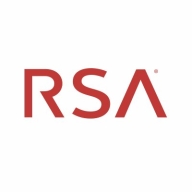

Find out what your peers are saying about ThreatMetrix, NICE, BioCatch and others in Fraud Detection and Prevention.
| Product | Market Share (%) |
|---|---|
| IBM Trusteer | 2.3% |
| ThreatMetrix | 7.1% |
| FICO Falcon Platform | 4.4% |
| Other | 86.2% |
| Product | Market Share (%) |
|---|---|
| RSA Adaptive Authentication | 1.2% |
| Microsoft Entra ID | 8.2% |
| Cisco Duo | 5.3% |
| Other | 85.3% |

| Company Size | Count |
|---|---|
| Midsize Enterprise | 1 |
| Large Enterprise | 6 |
IBM Trusteer Pinpoint Detect, helps protect digital channels against account takeover, fraudulent transactions, and can detect end user devices infected with high risk malware. Trusteer Pinpoint Detect is a cloud-based solution that can transparently build user profiles and continuously authenticate online identities to more efficiently differentiate between a true user and fraudsters. It is designed to enable a real-time risk assessment with an actionable recommendations, employ behavioral biometrics capabilities to seamlessly build models based on patterns of mouse movements in real-time and analyze patterns against learned user behavior and known fraud patterns, identify access using compromised credentials and provide actionable recommendations to help detect and mitigate fraudulent activities and control and create custom policies to help you rapidly build and deploy countermeasures leveraging machine learning and advanced analytics.
We monitor all Fraud Detection and Prevention reviews to prevent fraudulent reviews and keep review quality high. We do not post reviews by company employees or direct competitors. We validate each review for authenticity via cross-reference with LinkedIn, and personal follow-up with the reviewer when necessary.